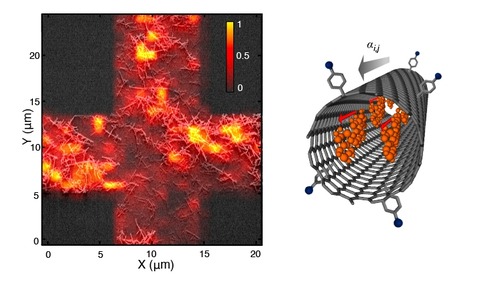Scattering technique used to identify the infinitesimal
3 Dec 2013

Researchers at the Universite de Montreal have developed a Raman scattering method to improve detection of infinitely small molecules.
Professor Richard Martel suggested that Raman scattering provides information on the ways molecules vibrate, which is equivalent to taking their fingerprint.
“It’s a bit like a barcode. Raman signals are specific for each molecule and thus useful in identifying these molecules,” he said.
The discovery revealed that Raman scattering of dye-nanotube particles is so large that a single particle of this type can be located and identified. All that is needed is an optical scanner capable of detecting this particle - much like a fingerprint.
“By incorporating these nanoparticles in an object, you can make it perfectly traceable
Professor Richard Martel
“By incorporating these nanoparticles in an object, you can make it perfectly traceable,” he said.
According to Professor Martel, the applications from this discovery are numerous.
In medicine, nanoprobes, which are composed of around one hundred dye molecules aligned inside a cylinder, and are 50,000 times smaller than a human hair, could lead to improved diagnostics and better treatment by adhering to the surface of diseased cells.
These specifically modified nanoprobes could, in effect, be grafted to bacteria or even proteins, allowing them to be easily identified.
Similarly, Martel said, the technique can be generalised as many types of dye could be used to make nanoprobes with their own distinctive “barcodes”.
“We could, in theory, create as many of these tags as there are bacteria and use this principle to identify them with a microscope operating in Raman mode,” he added.
Their discovery is presented in the November 24 online edition of the journal Nature Photonics.

